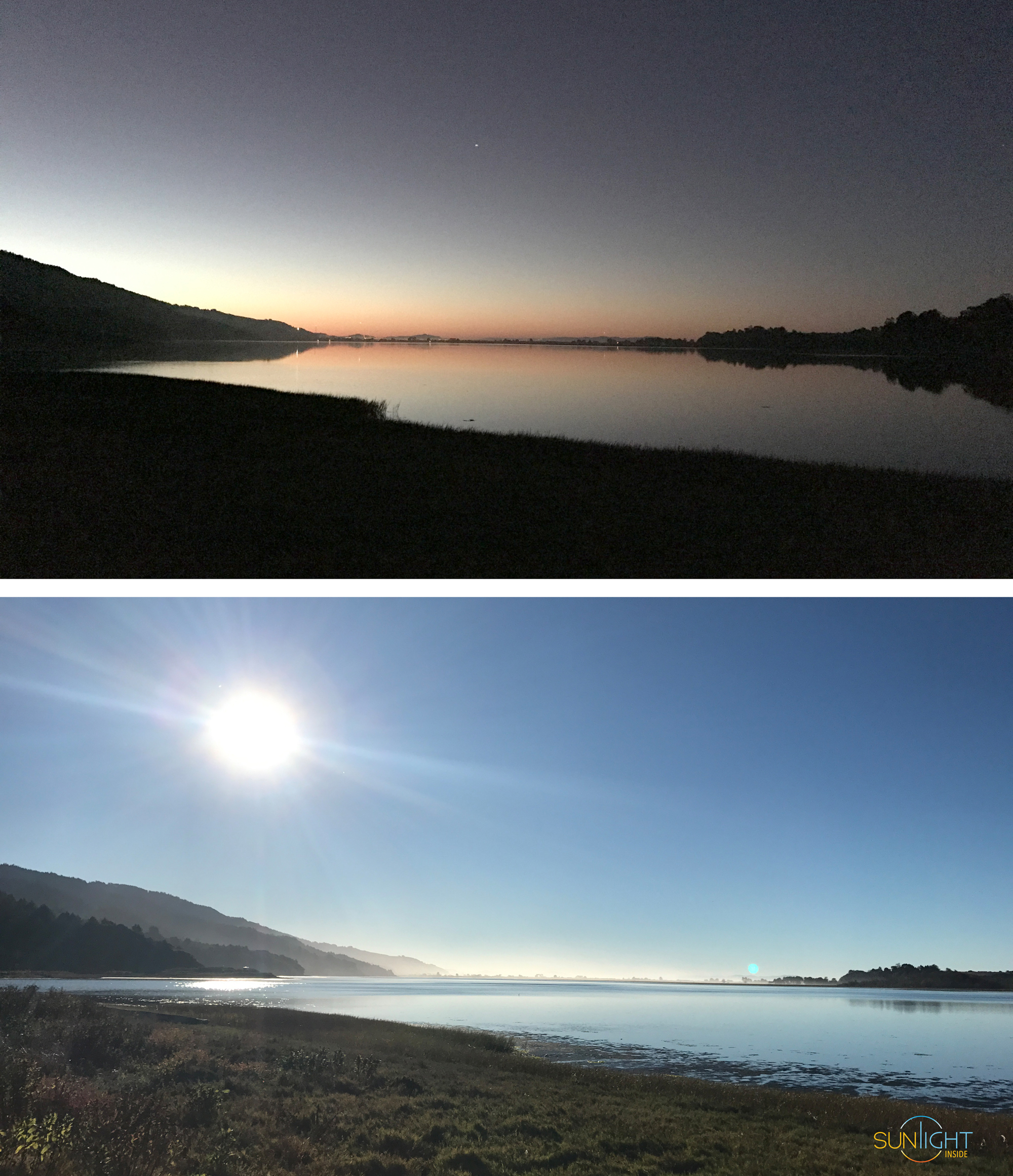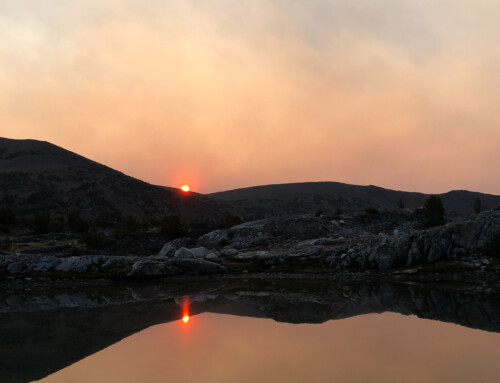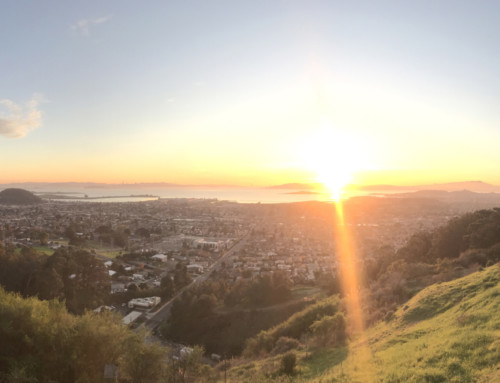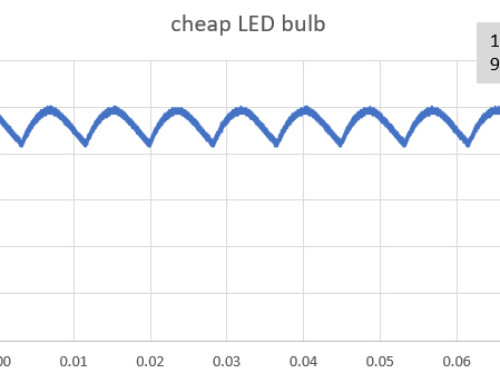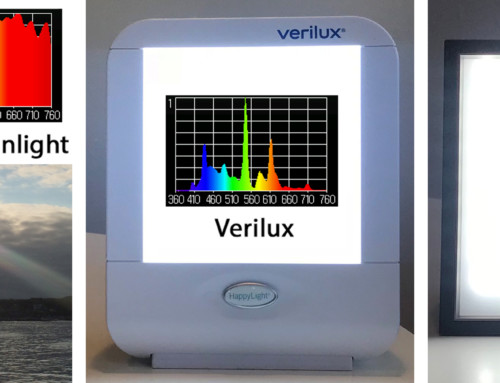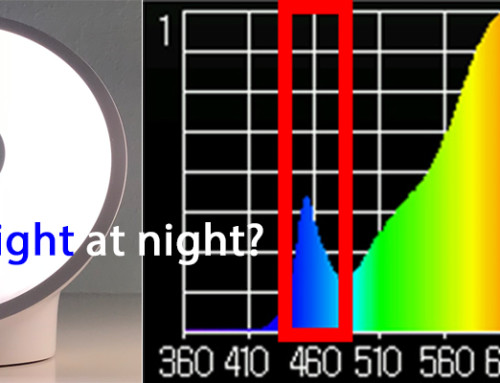We need light to feel energized and happy. Our mood and energy depend upon getting sufficient bright light during the day to signal ‘awake and alert’. Without this signal, our bodies can’t clearly distinguish between night and day, and don’t provide the energy and hormones we need to feel our best. Studies suggest that 1 in 5 of us experience a mild version of the winter blues, while 1 in 20 suffer from Seasonal Affective Disorder (SAD). In my own experience, the winter blues come and go = I feel down after a few days of gloomy weather, or after being stuck inside for too long. My mood lifts with sunny weather, and with time spent outdoors. From October through March our nights are longer than our days, and most of us don’t go outside to bask in the winter sun. Living in northern climates or with poor weather makes getting enough light even harder. Long hours spent indoors exacerbates the winter blues as most indoor environments aren’t lit brightly enough to stimulate our bio-rhythms. To varying degrees we’re all sensitive to light, we’ve evolved that way – the winter months make it especially difficult to get the natural light we need to feel our best.
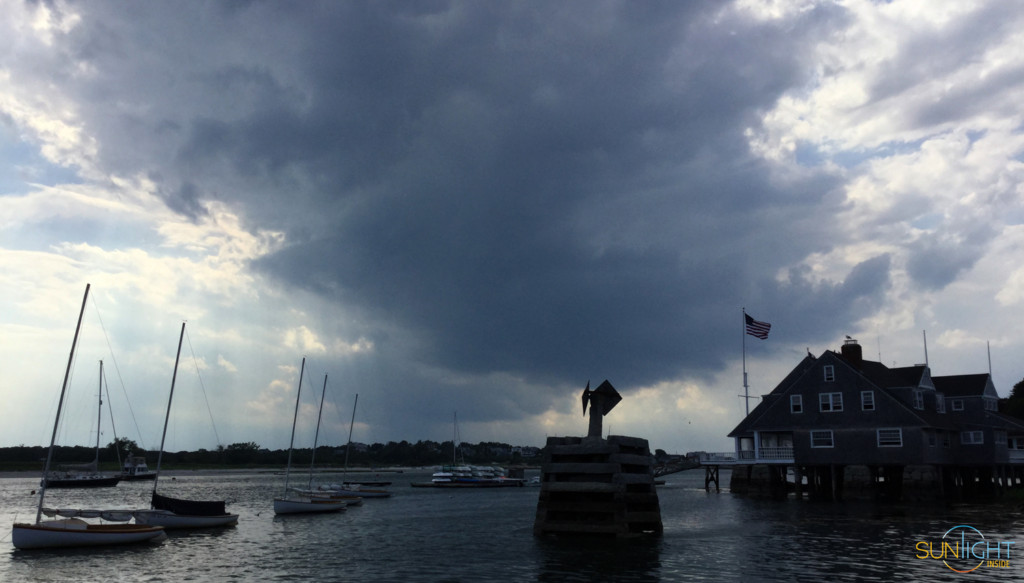
As described in in the scientific literature and summarized on our science page (and in other blog posts), we depend upon a strong daily light/dark cycle to regulate the circadian rhythms which underpin our health and wellness. Insufficient light during the day has been linked to poor sleep, depression, weight gain and chronic disease. The winter blues can range from mild to serious, please reach out to your physician if you have the feeling that things aren’t going to get better, your work or personal relationships are impacted, or you have suicidal thoughts.
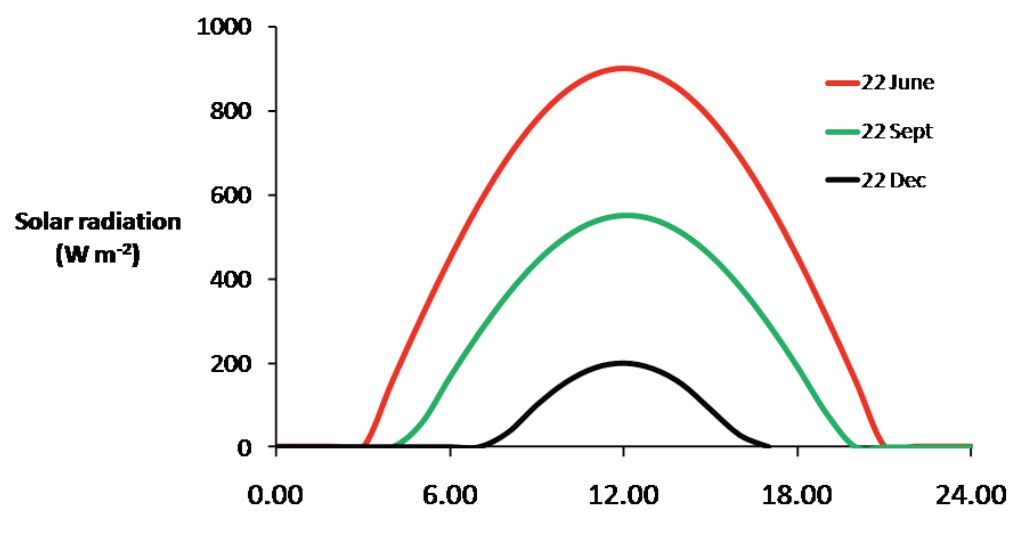
Days grow shorter, and the intensity of the sun drops 5x from summer to winter in northern latitudes (Figure for London in the UK – excerpted from this article).
Exposure to bright light triggers your body’s ‘awake and alert’ response, and clinical studies suggest >10,000 lux is needed (lux is a measure of light intensity). Daylight can range from >100,000 lux (on sunny summer days) to 20,000 lux in the shade, to less than 2000 lux on an overcast day (wikipedia). Most indoor lighting delivers less than 500 lux so spending time under artificial lights won’t help. The availability of natural light is impacted by how far north you live, with your latitude dictating both how many hours of daylight you receive in the winter and the angle of the sun in the sky (lower angles = more atmospheric filtering and less bright blue light). This makes getting enough light in the winter especially difficult for those who live in northern climates. It’s no accident that we consider dark grey skies to be ‘gloomy’ weather.

Specially designed bright SAD lights are an effective way to offset the winter blues when days are short and skies are gloomy. Bright Light Therapy is often prescribed for Seasonal Affective Disorder (SAD) where physicians recommend ~30 minutes of exposure to ~10,000 lux light sources each morning. Light therapy boxes and light therapy lamps are widely available and studies suggest they work well if you’re disciplined about using them every morning. The ‘dose’ of light you receive is tied to the brightness of the lamp, how close you are to the lamp, and the time you spend near the lamp. An alternate approach is to replace or supplement artificial indoor light with a new class of ‘human centric lighting’ (HCL) products which replicate natural light, filling your space with bright blue during the day, and soft warm light in the evenings. If properly designed, these products can deliver many of the benefits of bright light therapy, without requiring a specific morning exposure ritual. Leading-edge offices, schools and care-facilities are now being outfitted with human centric lighting systems to help support mood, boost energy and allow us to thrive in winter months.

In addition to regulating your circadian rhythm, exposure to sunlight plays an important role in Vitamin-D production, and insufficient Vitamin-D has also been linked to depression (as well as other health impacts). Vitamin-D production occurs when your skin receives UV-B light from the sun, so the mechanism is very different from the bright blue light which our eyes use to signal ‘awake and alert’. Studies suggest that very little vitamin D can be synthesized in the skin from November through February north of San Francisco and Virginia in the United States, in most of Japan, and in Canada and Europe (at latitudes north of 37 degrees). This topic will be addressed in a separate blog post – stay tuned!
Additional resources:
– high level description of Seasonal Affective Disorder (SAD)
– tips for dealing with the winter blues
– NPR interview about light as a cure for the winter blues
– 10 tips to get the most out of Light Therapy
– light therapy for general depression (seasonal and non-seasonal)
– scientific review of Bright Light Therapy for Depression
– Norwegian school adopts Human Centric Lighting

